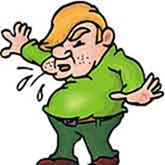Its spring time and the weather is great outside, but for many it is not a very pleasant time of the year. It’s time for their allergies to come up. Nasal and respiratory allergies are very intense in this weather (from March to early May). Sneezing, runny nose, watery and itchy eyes and even breathing problems can be a part of this allergic reaction.
Wheat harvesting in April becomes a major source for triggering this kind of allergy. Wheat harvest allergy not only affects those who stay in villages and near farms but also those who stay in cities, as wheat thrashing dust is carried by wind to nearby cities and towns too. Homeopathy has a wonderful treatment for spring allergy. Not only does it treat the current symptoms but also gradually eradicates the tendency to have such recurrent attacks every year.
Hay fever or seasonal allergic rhinitis, as it is called, is most commonly caused by tree and grass pollens and also wheat thrashing dust. It is characterised by symptoms of sneezing, itchy and watery eyes, runny nose and a burning or itchy sensation in the throat or palate. Coughing and sore throat may also be present in some individuals. Some patients develop asthmatic symptoms like breathing difficulties along with other symptoms of allergic rhinitis.
Homeopathy aims at treating the patient by optimising the overactive immune system. It works by giving a similar stimulus to the body like that of the allergen (pollen dust, etc) in very minute but activated form. This process gradually desensitises the overactive immune system against the allergens.
Quite a few of the homeopathic medicines used in treating allergies are made from plants whose pollens are known to cause symptoms of allergy. The most common example is the ragweed, which is also used as an important homeopathic medicine in treating allergy.
The most common homeopathic medicines used in treating hay fever are Sabadilla, Allium Cepa, Natrum Mur, Ambrosia and Arsenic Album. Allium Cepa requires a special mention in treating spring allergic rhinitis. Histaminum, Luffa Operculata and Galphimia Glauca are a few of the medicines that have been lately introduced in homeopathy and have shown very promising results in treating allergy.






